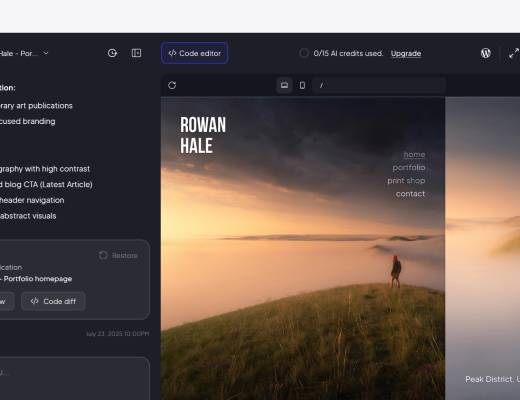In the world of business, entrepreneurs often stand out for their unique approach to problem-solving and innovation. Professor John Mullins, in his insightful lecture, introduces six counter-conventional mindsets that have propelled many
entrepreneurs to success. These mindsets challenge traditional business school teachings and corporate best practices, offering a fresh perspective on how to approach opportunities and overcome challenges in the business world.
The Origin of Counter-Conventional Mindsets
To illustrate the power of these mindsets, Professor Mullins begins with the story of Linda Weinman, a graphic design teacher who, in 1995, created the website linda.com as a sandbox for her students’ work. This simple initiative eventually grew into a billion-dollar business, later acquired by LinkedIn and rebranded as LinkedIn Learning. Weinman’s journey exemplifies how unconventional thinking can lead to extraordinary success.
Mindset 1: “Yes, We Can”
The first mindset challenges the traditional business school approach of sticking to core competencies. Instead, it encourages entrepreneurs to embrace new opportunities, even if they lie outside their current expertise.
Professor Mullins shares the story of Arnold Correa, a Brazilian entrepreneur who built Atmo Digital by repeatedly saying “yes” to customer requests that were outside his company’s initial scope. By being open to new challenges, Correa transformed his business multiple times, expanding from event management to satellite technology and digital signage.
“Yes, we can do that, even though we knew nothing about satellite technology, had never operated outside Sao Paulo, but he got it done.”
Mindset 2: Problem First, Not Product First
While large companies often focus on product iterations, successful entrepreneurs prioritize solving problems. This mindset shift leads to more meaningful innovations that address real customer needs.
The lecture highlights Jonathan Thorn’s approach to developing surgical instruments. Instead of focusing on product features, Thorn identified a significant problem in surgical procedures – forceps sticking to human tissue. By solving this issue, he created a valuable product that eventually led to a successful business acquisition by Stryker.
Mindset 3: Think Narrow, Not Broad
Contrary to the big company wisdom of targeting broad markets, entrepreneurs often find success by focusing on narrow, specific target markets. This approach allows for deeper understanding and better solutions to customer problems.
Professor Mullins uses the example of Nike’s founders, Philip Knight and Bill Bowerman, who initially focused on creating better shoes for elite distance runners. By addressing the specific needs of this narrow market, they developed expertise that later allowed them to expand into other athletic categories, ultimately becoming a global leader in athletic footwear and apparel.
Mindset 4: Asking for the Cash and Riding the Float
While large corporations often have abundant cash reserves, entrepreneurs understand that cash is the lifeblood of their ventures. This mindset focuses on creative ways to secure funding and manage cash flow.
The lecture discusses
Elon Musk’s approach with Tesla, where the company pre-sold vehicles and collected deposits long before production began. This strategy allowed Tesla to fund its operations and growth using customer deposits, demonstrating a innovative approach to cash management.
“How much money they got to start building roadsters? 10,000,000 US dollars in the bank in cash before they had built Roadster number 1.”
Mindset 5: Beg, Borrow, but Don’t Steal
Instead of following traditional return on investment (ROI) calculations, entrepreneurs often find creative ways to access resources without significant upfront investments.
Professor Mullins shares the story of Tristram and Rebecca Mayhew, founders of Go Ape, a treetop adventure business. Rather than purchasing land and trees, they partnered with the UK Forestry Commission, effectively “borrowing” the necessary resources to
launch their business. This approach allowed them to scale rapidly with minimal capital investment.
Mindset 6: Act Now, Ask Permission Later
While large companies are often constrained by regulatory concerns and lengthy
approval processes, entrepreneurs are more inclined to act first and deal with potential regulatory issues later.
The lecture uses Uber as an example of this mindset. By launching their service without seeking prior approval from taxi regulators, Uber was able to disrupt the transportation industry and create a new market category. While this approach can be risky, it often allows entrepreneurs to innovate in ways that might otherwise be stifled by existing regulations.
Applying Counter-Conventional Mindsets
Professor Mullins concludes by encouraging listeners to reflect on these mindsets and consider how they might apply them to their own challenges and opportunities. He poses four questions for consideration:
- Which of these mindsets are already embodied in you?
- Which of the others can you learn?
- Can you teach these mindsets to colleagues facing challenges?
- Is there a current challenge you face that could benefit from applying one or more of these mindsets?
By adopting these counter-conventional mindsets, entrepreneurs and business leaders can approach problems from new angles, potentially unlocking innovative solutions and driving significant growth in their ventures.
Frequently Asked Questions
Q: What are counter-conventional mindsets in entrepreneurship?
Counter-conventional mindsets in entrepreneurship are ways of thinking that challenge traditional business practices and teachings. They include approaches like saying “yes” to new opportunities, focusing on problems rather than products, targeting narrow markets, creative cash management, resourceful asset acquisition, and acting quickly without waiting for permission.
Q: How do these mindsets differ from traditional business school teachings?
These mindsets often contradict what is taught in business schools about strategy, marketing, risk management, and finance. They emphasize flexibility, problem-solving, and quick action over more conservative, analytical approaches typically taught in formal business education.
Q: Can these mindsets be learned and applied by anyone?
Yes, Professor Mullins suggests that these mindsets can be learned and applied by anyone facing business challenges. He encourages individuals to reflect on which mindsets they already possess and which they could develop to overcome obstacles and seize opportunities.
Q: Are these mindsets only applicable to startups and small businesses?
While these mindsets are particularly beneficial for entrepreneurs and startups, they can also be valuable for individuals working in larger organizations. Applying these approaches can help drive innovation and problem-solving in any business context.
Q: What are the potential risks of adopting these counter-conventional mindsets?
While these mindsets can lead to innovation and growth, they may also involve higher risks. For example, acting without permission could lead to regulatory issues, and focusing on narrow markets might limit initial growth potential. It’s important to balance these approaches with sound business judgment and ethical considerations.







